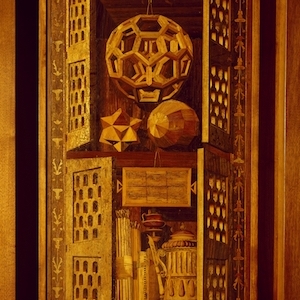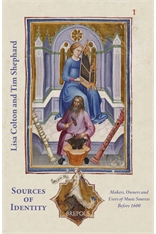Due to a research trip, it has taken me a few weeks to post news of a recent article on subjectivity, listening and music in early fifteenth-century Padua. The article is part of a special issue on visual and aural intellectual history. It arose from a paper delivered at the Rethinking Intellectual History conference, held 7–9 April 2015 at The University of Sydney, Australia, and was part of a session on the old and new in medieval music theory. Some of the research—including archival research mentioned in the footnotes—in this article is the result of a project that I am undertaking in association with the Australian Research Council Centre of Excellence for the History of Emotions, Europe 1100–1800.
I was interested in exploring the idea of the old and new in writings of music theorists at Padua, particularly around the issue of musical listening and the conceptualisation of consonance. As a point of departure, I chose Petrarch’s famous letter from his Epistolae familiares (IV, 1) written after his ascent of Mont Ventoux when the fourteenth-century poet was living near Avignon, now in the south of modern-day France. Without going into details here, Petrarch’s letter can be read as the author’s realisation and exploration of his own subjectivity, made apparent when Petrarch realises that his experiences differ radically from those whom he sought to model his life upon, and upon his personal reflection as he looked figurative to his past, present and future on the peak of Mont Ventoux.
In the article, I wanted to explore how subjectivity in musical listening began to affect late medieval theoretical discourse at Padua, particularly with respect to two prominent figures, the university professor Prosdocimo de’ Beldomandi and the composer Johannes Ciconia. Both left writings about music which are all the more interesting according to their intellectual positions. Yet, pigeonholing each theorist according to their intellectual context is complex: while Prosdocimo might be put in the camp of scholastic thought, he is obviously interested trying to describe the qualities of the music he hears not just in technical terms. Ciconia seems conservative in his choice of venerable authors on music from many centuries before he was writing—Boethius and Remigius of Auxerre, for example—but his framework for music knowledge proves to be a radical one, more in keeping with (and probably influenced by) humanist thought in Padua c. 1400.
The complete bibliographic reference for my article is as follows:
Stoessel, Jason. “Climbing Mont Ventoux: the contest/context of scholasticism and humanism in early fifteenth-century Paduan music theory and practice.” Intellectual History Review 27, no. 3 (2017): 317–332. doi: 10.1080/17496977.2017.1333314.
For readers without access to a personal or institutional subscription to Intellectual History Review, a free copy of the article can be found here. Note that Taylor and Francis kindly provide 50 free e-prints only, so once the online article has been accessed that number of times, no further copies will be available from the link above. If you require a copy for personal study, please request a copy using the contact form on this blog or my email at the University of New England.



You must be logged in to post a comment.